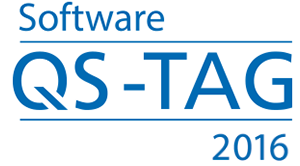14:30 -16:00 Uhr
Context Driven Test Improvement (Presentation in English)
Kees Blokland
Polteq Test Services BV
Context Driven Test Improvement
An important capability of people is to learn from experiences and to do things better the next time. There is always need for improvement. For testing, various improvement models are available, such as CMMi, TPI Next, TestSPICE and TMMi. T5, TI4Mobile or TI4Automation are examples of powerful tools for teams that want to improve testing with a particular goal in mind or within a certain context. General goals can be: ‘we want to reduce test cost’ or ‘we need to meet certain standards’. More specific goals can be: ‘we want to solve the problems we have with agile testing’ or ‘we want to become more successful with automating tests and mobile testing’. But what improvement model to use? Kees addresses the basic steps of test improvement that most models share and zooms in to this question in the ‘determine approach’ step.
The tutorial starts with considering the evolution of IT, testing and of test improvement and relating these trends to each other. From these trends we can understand the expectations modern testers are confronted with how it dramatically changes the requirements for test improvement. What are the shortcomings of traditional test improvement? What use have recent innovations in IT for test improvement? For instance: how to profit from agile/scrum in improvement projects?
The basic steps of improvement are organized in two levels. The “improvement architecture” level starts with getting the goal, scope and context clear (intake). The Approach is determined next, based on the intake. The approach is put together from fixed format and free format models and methods. Often, the approach contains an assessment that starts with collecting information about the ‘ist’ situation by holding interviews, observing teams in their daily practice and by studying documentation. The analysis of the collected information provides the input for improvement suggestions to achieve the ‘soll’ situation, the goal that was set during the intake. A concluding Advice comprises of a report of the activities so far, the improvement suggestions and a proposal for an improvement implementation plan.
“Improvement implementation”, the second level of improvement steps, starts with the improvement release plan containing the short term, middle term and long term improvement suggestions in a logical order. Teams pick improvement tasks from the improvement backlog, fitting them into their business as usual projects. Continuous improvement requires a cyclic process that includes checking improvement results against the goals that were set in the improvement architecture. Scrum or Kanban teams will find it easy to secure the continuity of improvement. For organizations that work differently a dedicated Agile improvement implementation process can be used.
Agenda of the tutorial:
- Introduction and evolution of test improvement
- Improvement architecture
- Improvement implementation
- Q&A
Learning objectives:
- To be able to position improvements and improvement needs in their context
- Understand the basic process of test improvement
- Learn about current and new improvement models
- How to apply free format methods within the improvement process
- Get insight in critical success factors for continuous improvement

Kees Blokland, Polteq Test Services BV
Before he joined Polteq in 2003 as test consultant he worked 14 years with AT&T/Lucent Technologies Bell Labs. As R&D manager Kees develops Polteq’s vision on testing and supports Polteq’s R&D teams. He provides international test consultancy as senior test manager and as coach of organizations, teams and individuals in improving testing. Over the last couple of years, he was involved in a few dozen test improvement projects, many of which were in Agile context. Kees teaches a broad range of test classes and he is author of a book about testing cloud servic
